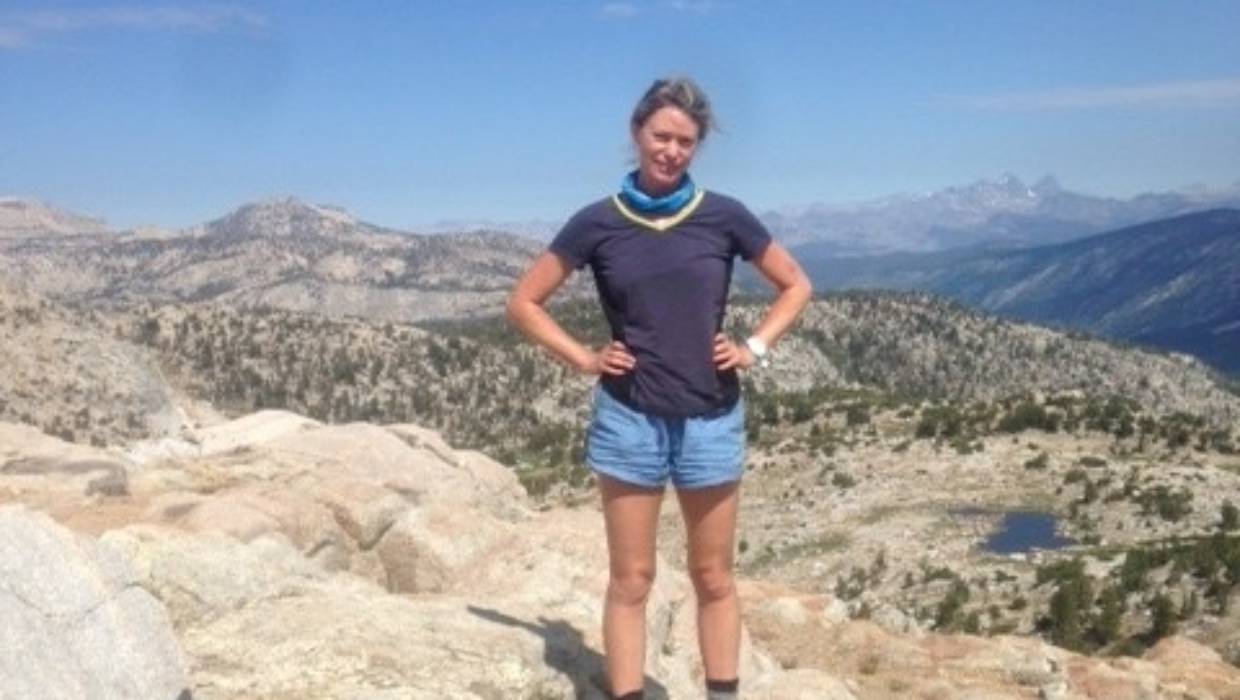Despite this, the following days were exhilarating, the scenery is magical and there's no shortage of people on the trail so I never felt lonely. I passed 20-25 hikers a day, all of them heading north; many of them were walking more than a thousand miles, starting at Campo on the Mexican border. There were lots of bearded men, a few women, some couples. One young man told me happily that he kept getting food stuck in his beard. He looked like Chris McCandless in Into the Wild. Almost everybody I passed was American, save for an Englishman, two Australians, and a French couple. I felt quite exotic.
The landscape is varied, though the upward climbs followed by steep descents are a constant. The high passes are my favourite, away from the flies and dust of the lower elevations and with lakes, wildflowers, and gleaming patches of snow. My biggest day was 26km. I usually hiked for seven hours and averaged 16 to 20 kilometres a day. I quickly fell into a routine: up around 6.45 am, oatmeal for breakfast, brush teeth, slather myself in sunscreen and mosquito repellent, pack up camp and start walking by 8.30 am. I often found a spot near a lake or river for lunch and a swim. The water was surprisingly warm and was heavenly to wash the sweat and dust away.
With up to seven days between resupply points, a swim was my only way to keep clean. Around 5.30 pm I would start looking for a campsite. I changed into my camp clothes, washed hands and feet, arms and face, set up the tent and "cooked" a dehydrated meal. After washing up I wrote in my journal and read until 9.30 pm. That first week, the climbs are tough and I have to keep stopping to catch my breath, but by the time I hit my first big pass at Sonora, I was starting to feel stronger. Thankfully, I was blister-free for the whole trip, all my gear worked well and the sun shone every day.

Sarla in the morning sunshine at Silver Pass.
In the end, I didn't quite make the month; a health crisis at home pulled me off early, but I felt so proud to have walked 370 kilometres over 23 days. I was lighter, stronger, and more comfortable in my own skin. I've taught Into the Wild for years, and when Chris writes on his deathbed "Happiness is only real when shared," students would cry at the poignancy of his epiphany.
Despite being far from home, I thought every day about family and friends, how fortunate I was to have them, the things we'd do when I finished. It was always exciting when I'd get some coverage and could send photos and messages out, sharing my journey and reassuring them I was safe. It was important for me to walk alone but I was also part of a community on the trail. I felt connected to my people back home and to the people I met on my travels. Night and day, aeroplanes tracked across the sky while down below I followed my trail happily through canyons and meadows, briefly at home with my backpack among the mountain streets.
This story was originally published in the Escape section of The Press.